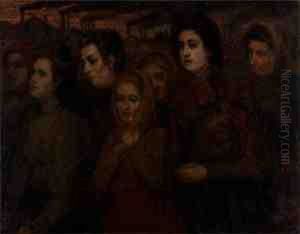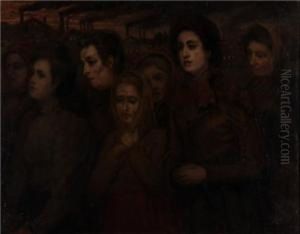A. Minardi Paintings
Alessandro Minardi, commonly known as Tommaso Minardi, was an Italian painter and engraver, born on December 4, 1787, in Faenza, then part of the Papal States. He is known for his work within the Purismo movement in Italy, which was a branch of the larger Neoclassical movement, emphasizing clarity, order, and idealized beauty in art. Minardi's work often reflected these ideals through his focus on historical, mythological, and religious themes, executed with precise lines and a clear, luminous palette.
Minardi received his early education in Faenza before moving to Rome in 1803, where he became a pupil of the painter Domenico Corvi. His education was furthered by the influence of other artists such as Felice Giani and Vincenzo Camuccini. In Rome, Minardi became deeply involved in the artistic circles and was influenced by the Neoclassical ideals that were dominating the art world at the time. He became a respected artist and intellectual, teaching at the Accademia di San Luca, and later becoming its president. His position at the academy allowed him to exert considerable influence on the direction of Italian art during his lifetime.
Minardi's style evolved over the years, but he remained committed to the principles of Neoclassicism throughout his career. He painted frescoes and altarpieces, but he was also known for his drawings and engravings. In addition to his artistic works, Minardi was an important art theorist, and his writings contributed to the discourse on art in Italy during the 19th century. He was a proponent of the idea that art should serve moral and educational purposes, a belief that was in line with the thinking of the Purismo movement.
Despite his commitment to the ideals of Neoclassicism and Purismo, Minardi's work was not without its critics. The emerging Romantic movement, which prioritized emotion and individual expression, was in many ways a reaction against the very principles that Minardi's art stood for. Nonetheless, he remained an influential figure in Italian art until his death on January 12, 1871, in Rome. Minardi's legacy is preserved in his works and in the academic traditions he helped to shape, which continued to influence Italian artists well after his death.


